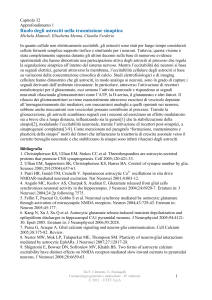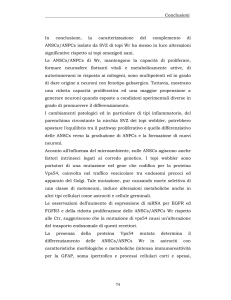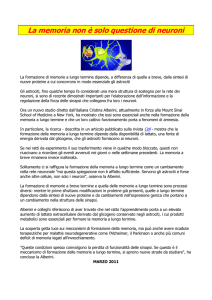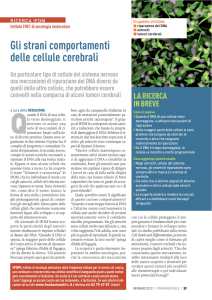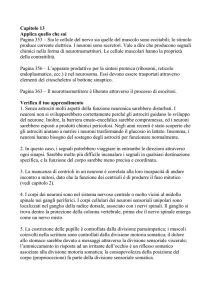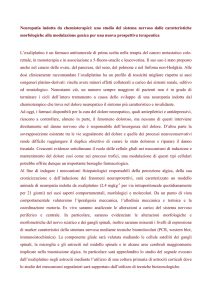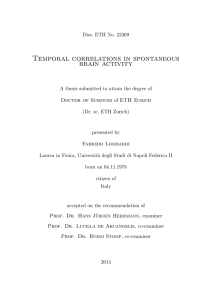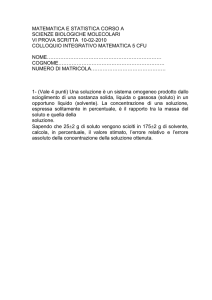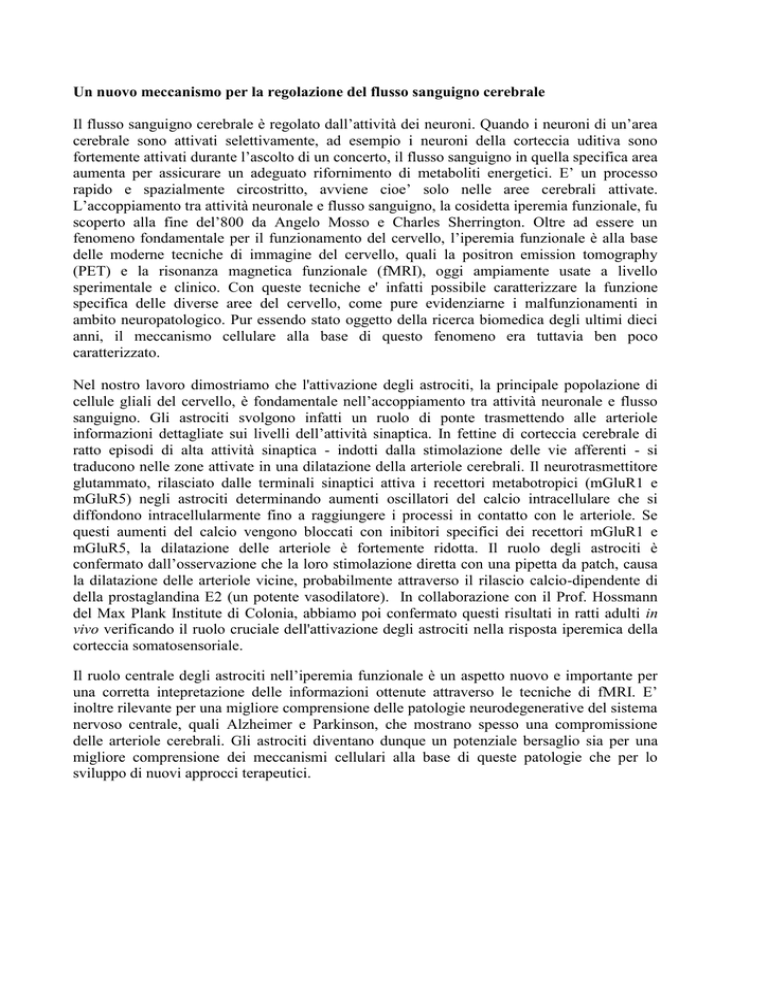
Un nuovo meccanismo per la regolazione del flusso sanguigno cerebrale
Il flusso sanguigno cerebrale è regolato dall’attività dei neuroni. Quando i neuroni di un’area
cerebrale sono attivati selettivamente, ad esempio i neuroni della corteccia uditiva sono
fortemente attivati durante l’ascolto di un concerto, il flusso sanguigno in quella specifica area
aumenta per assicurare un adeguato rifornimento di metaboliti energetici. E’ un processo
rapido e spazialmente circostritto, avviene cioe’ solo nelle aree cerebrali attivate.
L’accoppiamento tra attività neuronale e flusso sanguigno, la cosidetta iperemia funzionale, fu
scoperto alla fine del’800 da Angelo Mosso e Charles Sherrington. Oltre ad essere un
fenomeno fondamentale per il funzionamento del cervello, l’iperemia funzionale è alla base
delle moderne tecniche di immagine del cervello, quali la positron emission tomography
(PET) e la risonanza magnetica funzionale (fMRI), oggi ampiamente usate a livello
sperimentale e clinico. Con queste tecniche e' infatti possibile caratterizzare la funzione
specifica delle diverse aree del cervello, come pure evidenziarne i malfunzionamenti in
ambito neuropatologico. Pur essendo stato oggetto della ricerca biomedica degli ultimi dieci
anni, il meccanismo cellulare alla base di questo fenomeno era tuttavia ben poco
caratterizzato.
Nel nostro lavoro dimostriamo che l'attivazione degli astrociti, la principale popolazione di
cellule gliali del cervello, è fondamentale nell’accoppiamento tra attività neuronale e flusso
sanguigno. Gli astrociti svolgono infatti un ruolo di ponte trasmettendo alle arteriole
informazioni dettagliate sui livelli dell’attività sinaptica. In fettine di corteccia cerebrale di
ratto episodi di alta attività sinaptica - indotti dalla stimolazione delle vie afferenti - si
traducono nelle zone attivate in una dilatazione della arteriole cerebrali. Il neurotrasmettitore
glutammato, rilasciato dalle terminali sinaptici attiva i recettori metabotropici (mGluR1 e
mGluR5) negli astrociti determinando aumenti oscillatori del calcio intracellulare che si
diffondono intracellularmente fino a raggiungere i processi in contatto con le arteriole. Se
questi aumenti del calcio vengono bloccati con inibitori specifici dei recettori mGluR1 e
mGluR5, la dilatazione delle arteriole è fortemente ridotta. Il ruolo degli astrociti è
confermato dall’osservazione che la loro stimolazione diretta con una pipetta da patch, causa
la dilatazione delle arteriole vicine, probabilmente attraverso il rilascio calcio-dipendente di
della prostaglandina E2 (un potente vasodilatore). In collaborazione con il Prof. Hossmann
del Max Plank Institute di Colonia, abbiamo poi confermato questi risultati in ratti adulti in
vivo verificando il ruolo cruciale dell'attivazione degli astrociti nella risposta iperemica della
corteccia somatosensoriale.
Il ruolo centrale degli astrociti nell’iperemia funzionale è un aspetto nuovo e importante per
una corretta intepretazione delle informazioni ottenute attraverso le tecniche di fMRI. E’
inoltre rilevante per una migliore comprensione delle patologie neurodegenerative del sistema
nervoso centrale, quali Alzheimer e Parkinson, che mostrano spesso una compromissione
delle arteriole cerebrali. Gli astrociti diventano dunque un potenziale bersaglio sia per una
migliore comprensione dei meccanismi cellulari alla base di queste patologie che per lo
sviluppo di nuovi approcci terapeutici.
A novel mechanism for the control of cerebral blood flow
The cerebral blood flow is finely regulated by neuronal activity. When neurons in a specific
brain region are highly activated following a distinct set of stimuli - for example, the neurons
in the auditory cortex during listening to a concert - the blood flow in that region increases in
a temporally and spatially coordinated manner. This phenomenon is called functional
hyperemia and is a fundamental event in brain function. It was first described by the italian
Angelo Mosso and later by the british Charles Sherrington more than a century ago. The
molecules, signaling pathways and the ultimate mechanism at the basis of this phenomenon
were largely undefined despite the intense investigation that was performed during the last
decade and the increasing use of this phenomenon in basic and clinical neurosciences, as
revealed by the increasing importance of modern brain imaging techniques.
In our study, we show that a local activation of neurons - that triggers the dilation of cerebral
arterioles - also triggers intracellular calcium elevations in astrocytes. We were able to show that
these calcium responses spread intracellularly from astrocyte processes in contact with the synapse
to the endfeet in contat with the arterioles. The inhibition of these responses in glial cells results in
the impairment of neuronal activity-dependent vasodilation, both in brain slices and in in vivo
experiments, while the selective activation by a patch pipette of single astrocytes in contact with
arterioles triggers their relaxation. Astrocyte-mediated control of arterioles appears to be mediated
by a cyclooxygenase product, possibly the powerful vasodilator prostaglandin E2.
Information on the status of neuronal activity can, therefore, be encoded by astrocytes in a defined
frequency of oscillations and transferred to astrocyte endfeet in contact with blood vessels. There,
[Ca2+]i oscillations can be translated into a pulsatile release of vasoactive agents that result in the
dilation of cerebral arterioles. The specific activation of this neuron-to-astrocyte signalling appears,
therefore, a crucial step in the mechanism that governs the phenomenon of functional hyperemia.
Our results provide a mechanistic understanding of the basis for the neuronal control of blood flow
and thus the molecular basis on which modern brain imaging techniques, such as positron emission
tomography (PET) and functional magnetic resonance imaging (fMRI), rely.
The astrocyte role in the control of cerebral blood flow may represent a clue for understanding the
mechanism underlying cerebrovascular deficiencies occurring in numerous central nervous system
pathologies such as Alzheimer and Parkinson diseases. The underlying hypothesis is that a damage
to the astrocytes may result in the failure of these cells to respond properly to neuronal signals and,
in turn, to order the dilation of blood vessels. Under these conditions, neurons can not be provided
with the necessary energetic substrates. The ultimate result of this process can be an in initial
impairement of specific neuronal properties, such as memory function, that can be followed by cell
death. Astrocytes may, therefore, represent a potential target for a better understanding of the
cellular mechanism at the basis of neurodegenerative diseases of the central nervous system as well
as for the development of novel therapeutic approaches for these diseases.


